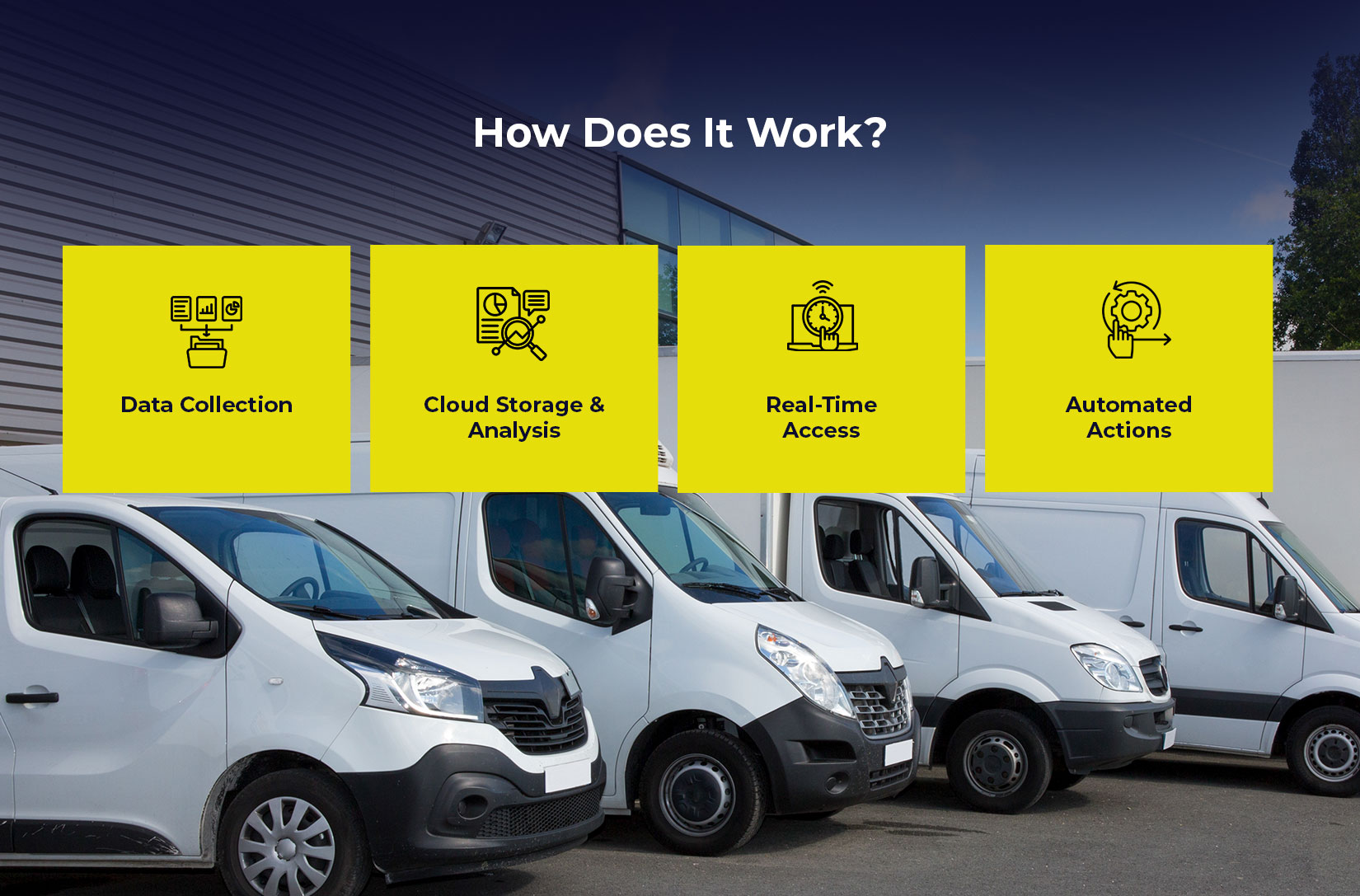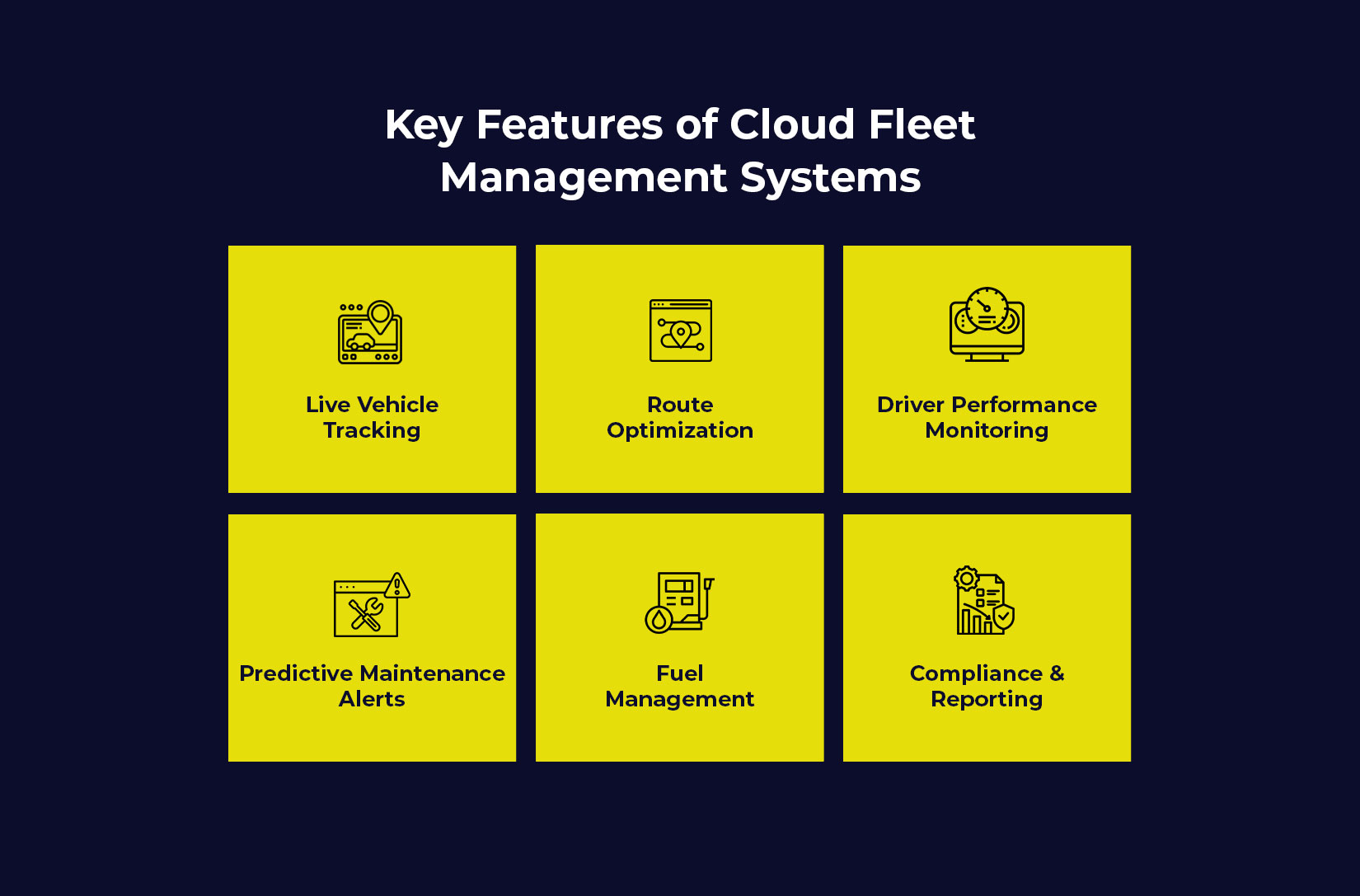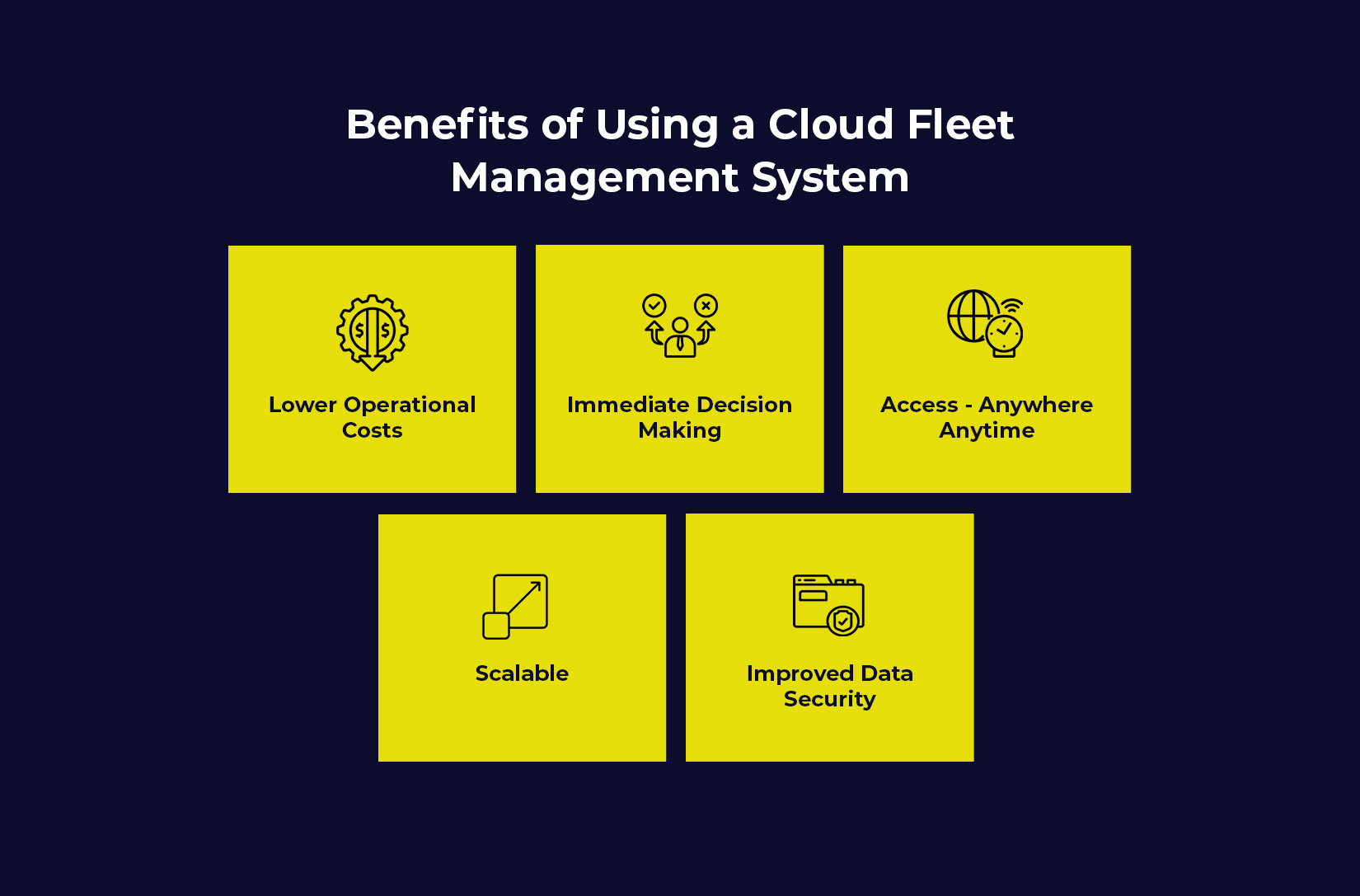
Cloud Fleet Management System: The Essential Guide
Today the fleet operations are more complicated than ever. Rising fuel costs and harden regulations are putting a ton of pressure on fleet operations. Also at the same time customers expectations for seamless integration, real-time tracking and data-driven decision-making is growing at a rapid speed. Traditional solutions fails in providing the flexibility and scalability needed to survive and take the edge in this fast-paced environment. This is where cloud fleet management system takes the stage.
What is a Cloud Fleet Management System?
A cloud fleet management system uses a web-based software platform to monitor, track, and optimize fleet operations. Instead of relying on local servers like traditional systems, it runs on the internet, allowing users to access it from anywhere and on any device through a secure login.
The cloud-based system concentrates on a few key factors. Factors like- vehicle tracking, route optimization, driver behavior monitoring, fuel usage, maintenance scheduling and compliance reporting. All of these are concentrated on a single dashboard.
This approach removes the need for an on-field IT infrastructure. Which ensures data can be shared, analyzed and acted upon instantly from anywhere at anytime.
How Does It Work?

To gather data in real time, the system makes use of telematics devices mounted in cars, GPS tracking, and IoT sensors. After that, the data is transferred to the cloud platform, where fleet managers can view and process it.
Here is how the process generally looks like:
1. Data Collection:
GPS and telematics devices collect real-time data. Data like- location of the vehicle, its speed, fuel level, engine diagnostics, idle time and driver behavior (abrupt braking or rapid acceleration).
2. Cloud Storage & Analysis:
The data which is captured is securely transmitted to the cloud, where its stored. After the data stored, the system analyzes it to detect patterns, highlight inefficiencies and identify maintenance. It is also check for safety concerns.
3. Real-Time Access:
Fleet managers can access the system through phone or web. Through this they can monitor fleet performance, view live updates, receive alerts and check historical trends.
4. Automated Actions:
The platform will trigger alerts for key events like speeding or maintenance needs. It can also auto-generate performance reports, helping the teams to respond and keep operations running smoothly.
Key Features of Cloud Fleet Management Systems

A modern fleet management solution typically includes the following features:
1. Live Vehicle Tracking:
By using GPS, the system can monitor the every vehicle’s exact location. This can ensure complete visibility across the fleet. Thereby, enhancing dispatching, improving ETAs and boosting customer satisfaction with accurate updates.
2. Route Optimization:
By using intelligent algorithms to plan efficient routes will help in reducing travel time, fuel costs and delays. This will result in faster deliveries and efficient use of the available resources.
3. Driver Performance Monitoring:
Ability to track metrics like speeding, abrupt braking and idling. It can also identify risky driving behavior and offer caching to promote safety and reduce accident related costs.
4. Predictive Maintenance Alerts:
The software can automatically send alerts when vehicle require servicing. This can help in preventing costly breakdowns, reducing downtime and extend the overall fleet life.
5. Fuel Management:
By measuring fuel usage and detecting anomalies, the company can prevent misuse or fuel theft through detailed fuel analytics.
6. Compliance & Reporting:
Automated record-keeping for usage of vehicle, hours of service and safety checks. This is done to ensure that regulatory compliance are met and simplifications of the audits is possible.
Benefits of Using a Cloud Fleet Management System

Switching to a cloud fleet management software can significantly improve operations and reduce costs. Here’s how:
1. Lower Operational Costs:
Cloud systems typically have a subscription model (SaaS) and therefore eliminate the need to make any substantial hardware investments up front. Better routing, maintenance and fuel tracking can allow businesses to operate 15-20% more efficiently annually (MarketsandMarkets).
2. Immediate Decision Making:
With live data available 24/7, dispatchers and managers can make decisions instantly based on previously captured data. Rerouting a vehicle due to traffic. Flagging an unsafe driver. Doing these things quickly and effectively relies on the right cloud system that delivers information they can action on in real-time.
3. Access- Anywhere Anytime:
Cloud-based platforms provide mobile access, meaning that fleet managers stay in contact regardless of their location. This enables better response time and ultimately better handling of incidents.
4. Scalable:
When a fleet expands, the best cloud fleet management systems scale without having to invest in physical infrastructure. This is precisely why many companies consider a cloud-based fleet management system with unlimited scalability the best possible solution.
5. Improved Data Security:
Cloud providers are responsible for implementing encryption, backups and disaster recovery protocol. This will lead you to believe your fleet data is secure and inexpensive to extract and transport if / when needed.
Why Are Companies Moving to Cloud Fleet Management?
There has been a significant increase in demand for agile and data-driven fleet operations since 2020. Statista data shows the global fleet management software market is expected to exceed $55B by 2032. Thus, building momentum right now with cloud fleet management.
Companies understand that legacy systems do not meet the dynamic nature of logistics. Whereas, cloud fleet management offers:
– Rapid software updates
– Remote configurations
– Lower total cost of ownership
– Connections to third-party apps (fuel cards, ERPs etc.)
How to Choose the Right Cloud Fleet Management Solution
There are many solutions on the market, and it is important to assess your solutions based on:
– User Experience: The dashboard should be user-friendly and customizable.
– Integration: Ability to connect with existing tools or apps.
– Support: 24/7 access is important for business operations.
– Analytics and Reporting: Look for AI-driven insights and historic performance dashboards.
If you are looking for the right solution, look for features of predictive analytics or geofencing, or AI-triggered route optimization. All of these are becoming standard services.
Also Read: Why Every Delivery Business Needs Fleet Management Software
Conclusion
Five years ago, a cloud fleet management system would have been treated as a mere luxury. However, today, it has found itself counted among the necessities of any modern logistics and delivery operation. This system would make it possible for companies to optimize their operations, reduce downtime, and improve safety. It would also allow to enhance decision-making using real-time data.
For an organization that’s looking into ensuring that it remains competitive and agile in the face of transport demands that are changing rapidly, it is probably the wisest decision to implement a cloud fleet management software. Besides making your operations future-ready, it creates the base for factors such as scaling, automation, and continuous improvement.
As the logistics industry climbs forth on the route of digitization, the businesses that are into investing in a cloud fleet management solution will become the trailblazers in efficiency, transparency, and profitability. So, to be the trailblazer it would be better to get the best cloud fleet management software. Thus, click on the red button and book a demo with LogiNext Solutions today.
55







@LogiNext